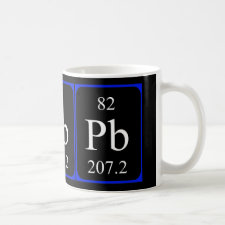
Authors: Ebrahimzadeh H, Behbahani M
Article Title: A novel lead imprinted polymer as the selective solid phase for extraction and trace detection of lead ions by flame atomic absorption spectrophotometry: Synthesis, characterization and analytical application.
Publication date: 2017
Journal: Arabian Journal of Chemistry
Volume: 10
Page numbers: S2499-S2508.
DOI: 10.1016/j.arabjc.2013.09.017
Alternative URL: http://www.sciencedirect.com/science/article/pii/S1878535213003158
Abstract: A novel ion imprinted polymer as the selective solid phase combined with flame atomic absorption spectrometry (FAAS) was applied for preconcentration and determination of lead in real samples. In the first step, Pb(II)-IIP was synthesized by copolymerization of 2-vinyl pyridine as the functional monomer, ethylene glycol dimethacrylate as the cross-linker, 2,2-azobisisobutyronitrile as the initiator that imprinted with Pb(II) as the template ion, 2-amino pyridine as the ligand. Subsequently, the imprinted Pb(II) was completely removed by leaching the dried and powdered imprinted polymer with HCl (2molL-1). This polymer was characterized by Fourier Transform Infrared (FT-IR) spectrometer. The effect of different variables on the extraction efficiency such as type and volume of eluent for extraction, solution's pH for adsorption, sorption and desorption times was evaluated. Under the optimum conditions: type of eluent, HCl (2molL-1); volume of eluent, 5mL; solution's pH for sorption, 5; sorption time, 90min; desorption time, 125min and breakthrough volume of 750mL were obtained. Preconcentration factor of the method was about 150. The limit of detection was obtained 0.75μgL-1 and a dynamic linear range (DLR) of 3-150μgL-1 was found. The maximum sorption retention capacity of Pb(II) ions on the imprinted polymer was 85.6mgg-1. The prepared ion-imprinted polymer particles have an increased selectivity toward Pb(II) ions over a range of competing metal ions with the same charge and similar ionic radius. Performance of the present method was evaluated for extraction and determination of Pb(II) in water samples at microgram per liter concentration and satisfactory results were obtained (RSD=2.7%)
Template and target information: lead ion, Pb(II)
Author keywords: ion imprinted polymer, lead, water samples, Flame atomic absorption spectroscopy



Join the Society for Molecular Imprinting

New items RSS feed
Sign-up for e-mail updates:
Choose between receiving an occasional newsletter or more frequent e-mail alerts.
Click here to go to the sign-up page.
Is your name elemental or peptidic? Enter your name and find out by clicking either of the buttons below!
Other products you may like:
 MIPdatabase
MIPdatabase









